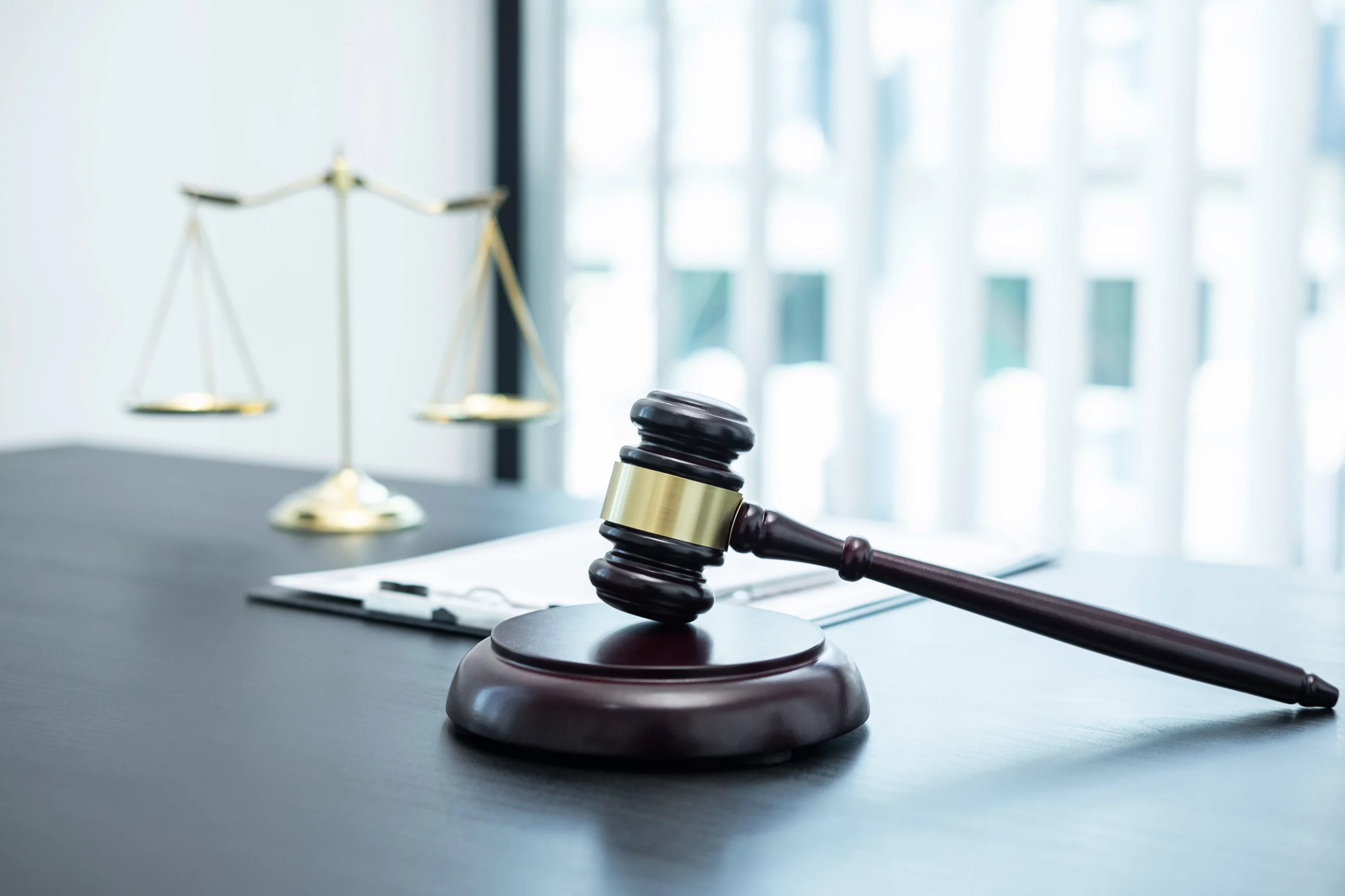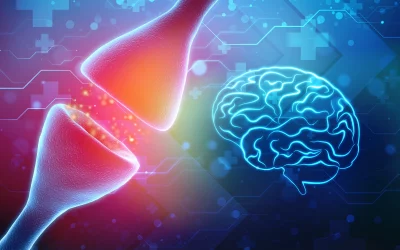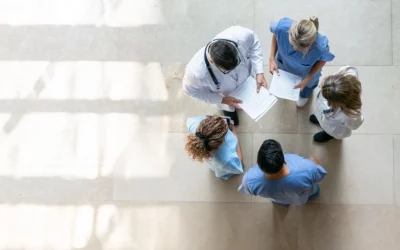DAMAGE FROM A TRAUMATIC BRAIN INJURY MANIFESTS ITSELF IN A VARIETY OF WAYS.
Brain injuries are among the most severe injuries a person may get, resulting in death and paralysis. A traumatic brain injury affects around 1.5 million individuals in the United States each year. Around 50,000 of them will perish. Another 80,000 or so will be permanently disabled due to the accident since the brain’s capacity to heal from damage is limited. A brain injury affects roughly 5.3 million individuals in the United States or about 2% of the population.
So, how can you tell whether someone has suffered brain damage? Here are a few of the most prevalent symptoms of brain injury. Some are evident, while others are more difficult to see.
Free Consultation
In Person | Phone | Zoom
EMOTIONAL AND IMPULSIVE CONTROL ISSUES
Frontal lobe injuries are characterized by poor impulse and emotional control.
The brain is a complicated organ separated into multiple regions called lobes that govern all bodily processes, including voluntary and involuntary reactions. The frontal lobe is one of the brain’s lobes. The frontal lobe is found in the brain’s frontal area, near the forehead, as its name indicates.
The frontal lobe is one of the brain’s biggest lobes, and it’s also one of the most common sites for traumatic brain damage.
The following are some of the most common causes of damage to the front or forehead area of the brain:
Car accidents in which a person’s forehead collides with the glass, the hood of the car, or even the pavement (as might happen in a car accident where the individual was ejected, or in a motorcycle, bicycle, or pedestrian accident).
A person hits his or her skull on the floor or an item after falling from a great height or the same level.
Accidents in which a person is hit by an item while working on a construction site.
Accidents involving a person’s forehead colliding with another person or item during sports or recreational activities.
The frontal lobes are the brain’s executives, in charge of many people’s thinking and decision- making processes. Making plans, transitioning from one activity to another, and avoiding temptations are all tasks that the frontal lobe is engaged in.
When a person’s frontal lobe is injured, it might be difficult to recognize the indicators of the impairment in a one-on-one discussion. However, the individual may struggle with the organizing, planning, and impulse- control skills needed to complete daily chores. Thefrontal lobe paradox is the name for this situation.
Communication Problems
A person’s capacity to communicate may be injured by injuries to the left side of the brain. Multiple parts of the brain, including the frontal and temporal lobes, are involved in talking and interpreting spoken language. Following a brain injury involving one of these areas of the brain, patients are often evaluated by a speech-language pathologist, who will check the individual’s speech, language, and cognitive abilities and their ability to chew and swallow.
The speech-language pathologist will next start working on areas of concern, such as the capacity to speak effectively; the ability to articulate one’s ideas, and the ability to comprehend written language.
The use of memory blocks, calendars, and to-do lists to help with remembering. Developing social abilities, such as reading social signs and taking turns in a discussion. Balanced and Coordinated Movement Is Difficult
The cerebellum, located slightly above the brain stem, is in charge of balance and coordination. Damage to this part of the brain might make it difficult to move in a balanced and coordinated manner. Damage to either the left or right side of the brain may result in coordinated movement deficiencies because each half of the brain controls the other half of the body.
Muscle atrophy is also prevalent following a brain injury, and it may lead to a loss of consciousness or a protracted period of immobility. Muscle atrophy may produce weakness and make motions seem unbalanced or clumsy.
Physical therapy, on the other hand, focuses on strengthening muscles that have atrophied due to immobility. While rehabilitation centers often work with brain-injured patients to regain important skills such as paying attention and planning or problem-solving, physical therapy focuses on strengthening muscles that have atrophied due to immobility.
It also aids in the treatment of balance and coordination problems. The physical therapist who performs these services should either specialize in treating brain- injured individuals or have any experience doing so.
HAVE DIFFICULTY CONTROLLING ONE SIDE OF YOUR BODY
Not only does the brain have multiple lobes, each of which is responsible for distinct biological activities, but it also has two sides. The right side of the brain governs movement on the right side of the body, whereas the left side controls movement on the left. Brain injury to the opposite hemisphere might cause difficulty regulating movement on one side of the body.
Helping the brain develop new pathways to send signals to the side of the body suffering from the damage while simultaneously building and maintaining strength on the affected side of the body is an important aspect of physical therapy and rehabilitation after sustaining damage that causes difficulty controlling movement to one side of the body.
MEMORY
Many lobes control memory, much as an expressive and receptive language (the capacity to speak and comprehend language). The frontal and temporal lobes are included in this. Visual memory problems may be caused by injuries to the right side of the brain. Short-term memory is more often affected by traumatic brain injuries than long-term memory.
People with brain injury-related memory loss may have a hard time remembering to recall. Remember to do things planned in the future, such as maintaining appointments or returning phone calls after you have promised to do so.
Forgetting specifics of the discussion, including the process of passing along messages to others, is a
common memory impairment caused by a brain injury. Forgetting where you put stuff like your car keys or phone.
Forgetting what you’ve done or said before, or again asking the same questions. Not knowing what day it is or what hour it is.
The inability to retrace your steps, even if you took them only a few days ago. Forgetting all or part of what you’ve just read or seen in a film.
Forgetting what you’re meant to be doing at work, at home, at school, or in the neighborhood. Forgetting crucial dates like birthdays and holidays.
Forgetting to take medications regularly.
Therapy for those who have memory problems resulting from a brain injury frequently focuses on teaching compensatory ways for dealing with memory problems, such as removing distractions that might interfere with one’s ability to concentrate on essential objects or events. They may also concentrate on using memory aids like to-do lists, organizers, and phone applications to assist the client in remembering their planned chores.
Asking people to speak slowly and repeating what they said to assist them in remembering it, as well as giving oneself more time to practice or rehearse topics that need to be recalled, may all be beneficial. Items forgotten, such as a wallet, keys, or mobile phone, may be stored in a memory station and quickly accessible before leaving the house. A pillbox with dates on it might help you remember to take your meds on time.
HEADACHES THAT LAST A LONG TIME
Mild, moderate, and severe brain injuries are common classifications. A “mild” brain injury, sometimes known as a concussion, may, nonetheless, have significant repercussions. Post- concussion syndrome is a collection of symptoms, including headaches, that develop after a concussion. The headaches usually start a few days after the accident and disappear within three months. Some patients, however, get persistent headaches that last a year or more.
According to experts, post-concussion syndrome is thought to be caused by structural injury to the brain or a malfunction in the nerve transmission system.
Women, older people, people with a history of previous brain injuries, people with a history of depression, anxiety, or post-traumatic stress disorders, people with a poor social support system, people with a lack of coping skills, and people who are experiencing significant life stressors are the people who are most likely to experience post-concussion syndrome, regardless of the severity of the injury.
For post-concussion syndrome, there is no one conclusive test. Rather, physicians will use diagnostic scans to rule out any other injuries or diseases causing the same symptoms.
Antidepressants, antihypertensive medicines, and anti-epileptic medications are all routinely used to treat headaches. Additional therapy and drugs may help with some of the disorder’s other symptoms, such as thinking and memory issues, as well as sadness and anxiety.
POST-TRAUMATIC EPILEPSY (PTE) IS A KIND OF EPILEPSY THAT OCCURS AFTER
Recurrent seizures that occur more than a week after a brain injury are known as post- traumatic epilepsy. The seizures that occurred soon after the injury are thought to be a reaction to the damage. Those that arise more than a week after the injury, on the other hand, are often unprovoked. Around 5% of people who have had a brain injury develop this syndrome, accounting for around 20% of all
occurrences of acquired epilepsy. While it is hard to anticipate which patients would develop this illness, those who sustain a penetrating brain injury or brain hemorrhage are more likely to develop post- traumatic epilepsy.
A genetic tendency to seizures is another risk factor that increases a person’s chances of developing
post-traumatic epilepsy.
Suffering a penetrating injury since people who suffer more severe injuries are more prone to develop consequences such as post-traumatic epilepsy.
Injuries that include a foreign item breaking through the skull and invading the brain are 50 percent more likely to result in post-traumatic seizures than injuries that do not involve a foreign object breaking through the skull and penetrating the brain.
The occurrence of post-traumatic seizures in the days after the injury. About a quarter of people who have seizures in the first ew days after an injury will develop the recurring, late- stage seizures associated with post-traumatic epilepsy.
Anti-epileptic drugs are routinely used to treat this problem. If the medicine isn’t enough to keep the illness under control, surgery may be necessary. Individuals who get epilepsy due to trauma have a poorer prognosis than those who develop epilepsy for unknown reasons.
Epilepsy caused by a stressful event raises the chance of dying young. Problems with the Neuropsychiatric System
Any injury to the brain has the potential to cause physical and psychological problems. The brain is the “self’s” physical receptacle. Our personality, memories, and knowledge are all physically linked to the brain’s structure and may be influenced by an injury to that structure.
Sleeping disorders, personality disorders, attention deficit disorders, depression, anxiety, and cognitive deficit disorders may all be caused by brain damage acquired due to a traumatic brain injury.
These issues need not just medical treatment but also psychological medication. Like most of the damage produced by a traumatic brain injury, Neuropsychological disorders may typically only be addressed rather than completely repaired, requiring a person to commit to long-term treatment and rehabilitation.
THE EFFECTS OF BRAIN INJURY
The symptoms listed above and several other signs of brain damage are part of what makes brain injuries so difficult to treat. They also significantly impact a person’s ability to participate in the community, have mutually enjoyable relationships with family and friends, find and keep gainful employment, or finish school.
SEEK THE ADVICE OF A SEASONED PERSONAL INJURY LAWYER.
PERSONAL INJURY ATTORNEY JEREMY D. EARLE, JD
Suppose you or a loved one has suffered a brain injury due to someone else’s careless or reckless actions. In that case, the effects of the injury on your life can help determine the value of your case, which is the amount of money you can seek from the at-fault party through a settlement or a brain injury lawsuit.
An experienced brain injury lawyer is familiar with these typical problems and the treatment options utilized to help the client compensate for the deficiencies created by the damage. They are aware of the financial, physical, and emotional toll that a personal injury may have on an injured individual and their family. To discuss your case and your legal options going forward, contact a brain injury lawyer now.












